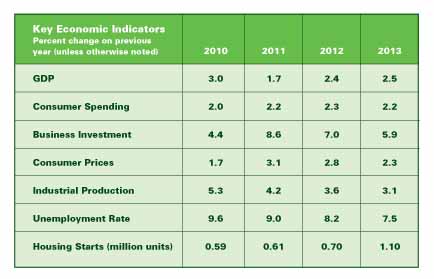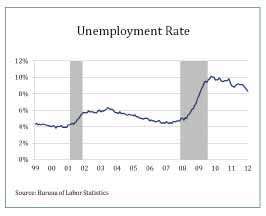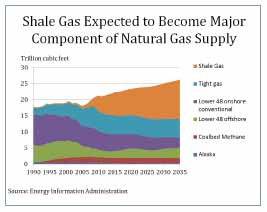Economic analysis and the
30,000-foot view are valuable ways to assess the state of the mechanical
insulation industry, but for this issue, Insulation Outlook wanted to get the
perspective of those who work in the industry on a daily basis: National
Insulation Association Members.
The following interviews
will give you a glimpse into the challenges and changes they are seeing in the
industry, as well as what they expect to happen in the coming year.
The views represented here
span the different categories of NIA Members: commercial and industrial
insulation manufacturers, distributors, fabricators, and contractors. We think
you’ll find these perspectives valuable.

1. In your opinion, what is the current state of the
industry?
I think
that the industry is in a solid position to reduce energy costs, show savings,
and have an impact on the environment; so we should continue to grow in terms
of awareness and opportunities. Growth may be slower than what I would like to
anticipate, but steady. The industry still needs to work together more, and all
of our NIA Members need to be more involved. [Beyond the industry], I wish I
had more confidence in the current business environment in the United States.
2. What do you see happening in the insulation industry
over the next year?
I think
things will remain steady and constant, with some minimal growth. The economy
is still stalled for the most part?although sectors and certain markets are
showing some moderate growth?as we wait to see what happens in November. There
is significant opportunity for growth and energy independence, but the attitude
in Washington has to change. Our industry can be at the forefront in terms of responsibly
helping energy independence and energy cost reduction/savings moving forward,
but? the political environment in D.C. has to be more business friendly, and we
are not there or even close to being there.
3. What were your biggest challenges in 2011, and what do
you foresee as the main challenges in 2012?
Our
biggest challenges were maintaining margins while growing. We were able to
further diversify our offering, which was great, but the outside pressures
related to margins were a daily fight. Discipline was a key factor in our
success.?
For 2012, we will continue with our business plan and stay on
task and remain disciplined. The challenges will be the factors that we cannot
control, which are related to the government? like excessive taxation and
deficit spending.
4. What changes would you like to see in local, state, or
federal regulations or energy policies related to mechanical insulation in the
commercial and industrial markets?
[Changes related to] energy independence,
specifically:
1. Development of the Keystone Pipeline.
2. Development of further oil and gas opportunities in
Alaska.
3. Further off-shore drilling within U.S. waters.
4. Further research on alternative energy sources.
5. Nuclear plant development.
6. A 20-year plan for infrastructure has to be developed
across the country.
All of the above can be done responsibly and safely
for the environment. This will create jobs, help our industry grow and give our
industry the opportunity to participate in a meaningful way toward energy
independence. The oil industry can have a huge impact on our economy and
economic stability. We can have energy independence with a good environmental
policy.
Related to alternative energy solutions, we
need to spend the time to develop these options over time. It is very
concerning to watch the amount of waste that goes into research in the effort
to win the race to be first. Washington, D.C. needs to set up the proper
business climate and not attempt to be in the development business. The federal
and state governments need to set up a business environment that will allow
business to grow and become healthy so that research and development dollars
can be put back into business. In the current business environment of tax and
regulate, we are locked up.
5. What are the products or insulation systems of the
future? When can we expect to see them?
In a more business friendly climate, there would be
further energy development and then I truly believe that you would see our
manufacturers, both domestically and abroad, begin to develop and release new
products.
A major benefit is that we have products
currently available that can have an immediate impact on energy savings and the
environment.
6. What initiatives would you suggest the industry undertake
to promote the perception of mechanical insulation as an important energy
efficiency initiative?
We need to stay on the current track to eventually
get tax incentives in place for mechanical insulation. NIA has worked very hard
to position us for the future; unfortunately, we cannot control the political
environment. Patience and persistence is the key.
7. How can the industry better educate facility owners
about the advantages of proper and timely maintenance, as well as the risk of
not having an effective maintenance program?
We need our membership to take the tools and
information that are available and begin to sell again. Most of us are caught
in our daily routine, dealing with all of the details that require basic
business to be accomplished day in and day out. If every NIA Member would
present the benefits of mechanical insulation to three facilities per month, we
would be on our way. What I would stress is that you need to be on your game,
understand our products, and last of all have the right audience.
8. What potential events do you foresee over the next two
years in the construction industry?
There
will be demand for more environmentally friendly buildings. There are pockets
of interest now. Water conservation will move to the forefront. I believe that
the overall operating cost of a building and/or facility will come under severe
scrutiny ? to reduce cost and become much more efficient.
Modeling a plant or building before it’s built, or reviewing
it in terms of how it is to be maintained in the future, will also become much
more visible.
All of that said, if we don’t change the business environment
in the United States, we will fail in our efforts to reduce and conserve
energy. We will not be able to grow and develop as a country with excessive
taxation and continued deficit spending.
For more information, call
425-228-4111 or visit www.ejbartells.com.

1. In your opinion, what is the current state of the
industry?
I can really only speak to the industrial market, and
we are seeing a slight decline after several years of solid performance and
steady growth. The decline should only be temporary, as the engineering firms
seem to be loaded with projects that will come on line in the next few years.
In the South and Southwest, we have not been impacted as much by the economic
downturn that some other parts of the county have. There are several power
plants that are in pre-construction or the early stages of construction, and
insulation will play a key part in the success of these plants. For the first
time in decades a new nuclear power plant is being built, and this, too, should
be good for the future of our industry. If lending institutions begin to loosen
up, the commercial market should begin to gain traction.
2. What do you see happening in the insulation industry
over the next year?
Hopefully, getting the tax initiatives program
passed. Realizing this is an election year, that may not happen; but we have to
keep trying and we will. We must continue to educate the end users on the value
of energy conservation and the role our industry plays. Recently, I went online
to a state energy center for studies website and nowhere on the site was
insulation mentioned. That tells me we may still be, as Ron King says, “the
forgotten industry”?although through NIA it is being promoted. Insulation has
to become a forethought rather than an afterthought.
3. What were your biggest challenges in 2011 and what do
you foresee as the main challenges in 2012?
It is not just a challenge for the upcoming year but
the future as a whole, and that is the demographic of our workforce. Insulation
is a wonderful field to work in and truly is a learned skill. Our craftsmen can
make a good living for themselves and their families. The most difficult part I
see is encouraging young people to come work in our industry and the
construction industry as well. Throughout the country, training programs are
available if they are ready to learn.
Another challenge is getting more of the
engineering firms, architectural firms and even the end users to think about
insulation during the pre-engineering and/or design process and perhaps get us
involved on the front end of projects. We have a wealth of knowledge that can
be beneficial in most cases. If they would seek input from us, we might be able
to assist in a better design and save them money.
4. How can the industry better educate facility owners
about the advantages of proper and timely maintenance, as well as the risk of
not having an effective maintenance program?
I think with the tools and information available
through NIA, many members are attempting to do this every day. This past fall
several NIA Members made a presentation to the National Association of State
Energy Officers (NASEO) at their annual convention on the role of insulation
with regard to energy conservation, and I believe it opened many of their eyes.
Rather than just talk about how insulation can affect energy efficiency, an
actual example was used where the savings were significant with a quick return
on investment. Additionally, when we discussed the reduction in greenhouse
gases, it really got their attention. We must continue to take advantage of
these types of opportunities to get in front of groups like NASEO to present
our message.
Facility owners are looking for ways reduce costs and we have
the products that can produce almost instantaneous results. Now when I speak to
facility owners, I use concrete examples of how proper insulation can save them
money and reduce their carbon footprint. Some are beginning to listen. Just
about every state in the country has a budget deficit and is looking for ways
to reduce expenses. We are on the cusp of helping them toward that endeavor.
For more information, call
225-343-0471 or visit www.pentrincorp.com.

1. In your opinion, what is the current state of the
industry?
The state of the industry is good?not strong, but
good. Those of us in the insulation industry are encouraged by improvements in
the industrial sector, where some large construction and renovation projects
are starting. In the commercial sector, we are
seeing growth with smaller one- and two-story commercial projects.
Institutional
sectors like hospitals, schools and government projects remain a mainstay for
this industry. They helped us weather the recession. Serving these industries
well is very important for companies in our industry.
In the residential industry, housing starts
are slow but are expected to increase as 2012 progresses. When this market
increases, we will see growth of consumer confidence, which impacts all types
of businesses to a degree.
There is growth in the retrofit and
renovation side of our business. There’s a lot of uninsulated pipe and duct out
there. This represents a huge opportunity for the insulation industry.
2. What initiatives would you suggest the industry undertake
to promote the perception of mechanical insulation as an important energy
efficiency initiative?
Education is and always has been the key. We have to
continue to tell the story of how insulation is a great investment and how, in
many cases, it will pay for itself in months and not years. It is an investment
that pays greater dividends the more expensive energy becomes; and I don’t
think anyone expects energy?at least not petroleum-based energy?to become
cheaper long term. Our industry needs to champion energy efficient
construction. We have to remind our customers that energy efficiency doesn’t
happen without mechanical insulation! As energy costs go up, the savings from
installation of adequate insulation will pay back even quicker. It’s an easy
story to sell, and it bears repeating again and again.
Telling the story of the energy-saving benefits of insulation
will also help to reduce the instances of insulation being
“engineered out” of projects for the purpose of cost savings. As Building
Information Modeling (BIM) takes hold in the building community, engineers and
architects will continue to do more pre-construction analysis. This analysis in
the pre-construction phases holds the potential for validating insulation
products?perhaps even one day demonstrating to owners and engineers what the
exact value is. When that happens, engineers and owners will begin to see
insulation as a non-negotiable mechanical component.
For more information, call
919-304-3846 or visit www.armacell.us.

1. In your opinion, what is the current state of the
industry?
Indications are that the economic downturn, which
started over three years ago, has just about run its course; and that activity
in the construction industry is beginning to grow. However, that growth is slow
at best.
2. What do you see happening in the insulation industry
over the next year?
As the economy grows, there should be more
opportunities for all insulation in the coming year. As the awareness of the
value of insulation increases, our industry should be in a favorable position
to expand at a more rapid pace than the general economy.
3. What were your biggest challenges in 2011 and what do
you foresee as the main challenges in 2012?
We had difficulty controlling healthcare costs in
2011 and we expect that to continue through 2012 and beyond as the new
healthcare legislation begins to take effect. Price increases in almost all of
our raw materials and finished goods expanded at a rate that was difficult to
keep up with. Our customers, especially contractors, were hard pressed to
estimate what material costs would be for jobs they were asked to quote. That
trend is continuing in 2012. The recent rise in fuel prices also will affect
us.
4. What changes would you like to see in local, state, or
federal regulations or energy policies related to mechanical insulation in the
commercial and industrial markets?
Anyone who listened to the State of the Union heard
the president use the word “insulation” when he was discussing energy savings.
That is a very positive sign. NIA has been in the forefront of the effort to
get energy legislation through Congress. There is a good story to be told about
the value of insulation, and we are telling it.
5. What are the products or insulation systems of the
future? When can we expect to see them?
While it is difficult to predict the future, there
have been several new products that have come to market in the past several
years: Aerogels and fiberglass with non-organic binders being two of them. I
would anticipate that this trend will continue.
6. What initiatives would you suggest the industry
undertake to promote the perception of mechanical insulation as an important
energy efficiency initiative?
As I drive to work each day, I pass several
billboards along the interstate highway extolling the virtues of insulation.
These ads are paid for by Local 17 of the Heat and Frost Insulators of Chicago.
I would not have guessed 5 years ago that I would be seeing this. We, along
with many others, are doing lunch-and-learn presentations to engineers and end
users and we are having an easier time getting past the gate keepers! These are
some of the things that we, as suppliers, are doing; and I know that the
contractors and manufacturers are engaged in similar activities.
7. What potential events do you foresee over the next two
years in the construction industry?
There has
been some consolidation in our industry, and I would expect that would
continue. We have been in an unsettled political climate for some time now, and
that will continue at least until the election in November.
For more information, call
800-775-4485 or visit www.insulationfabricators.com.








